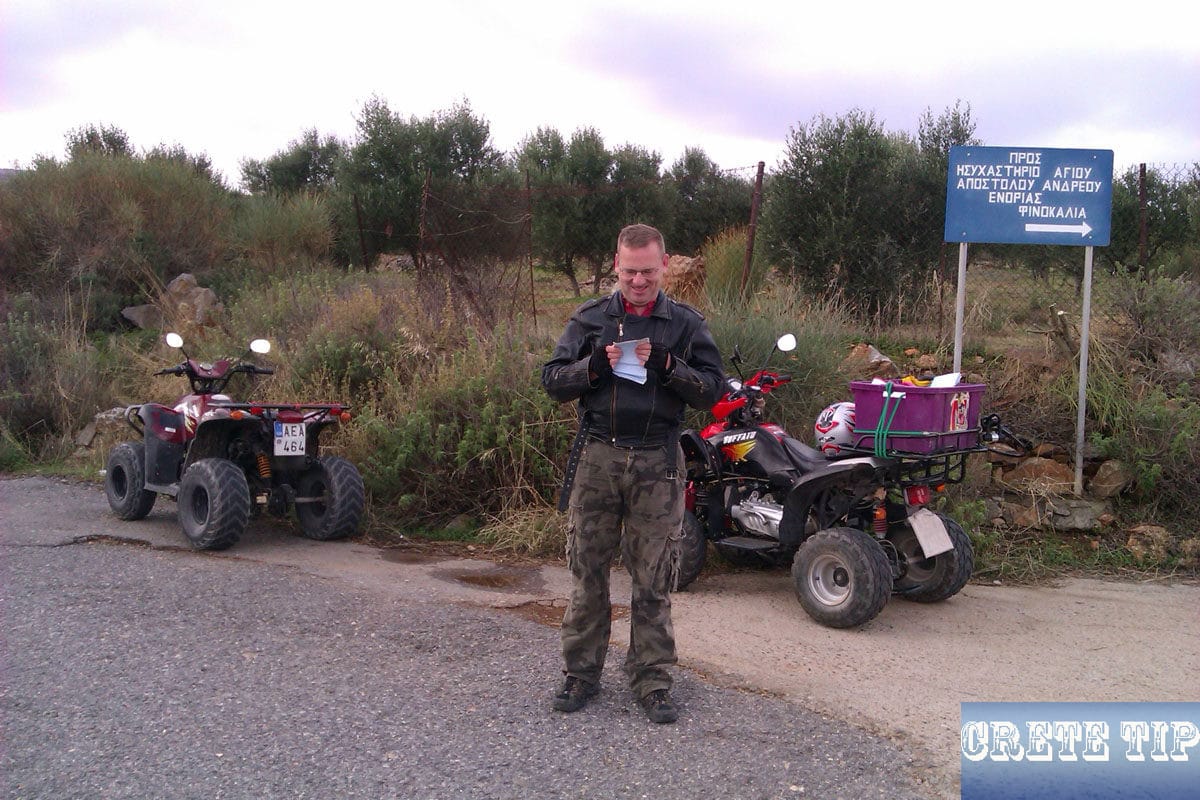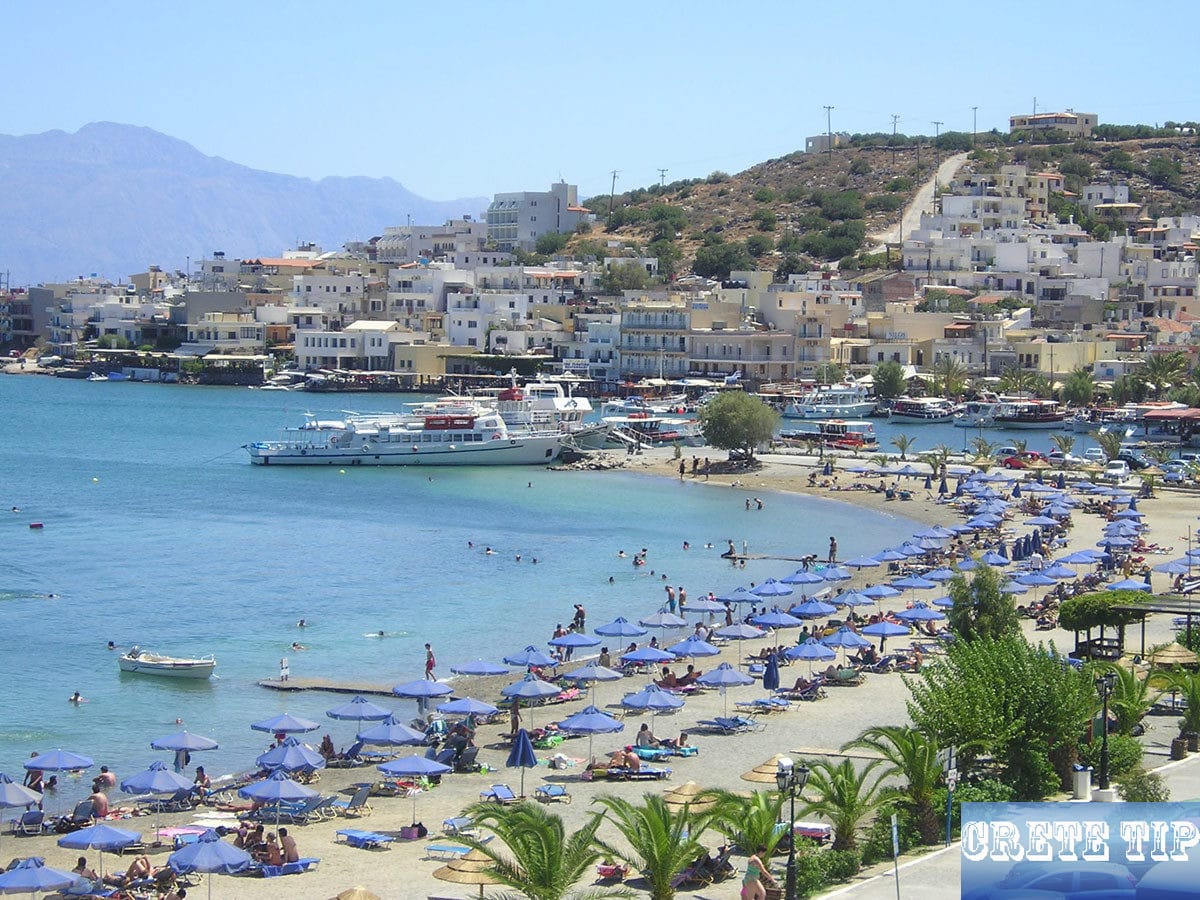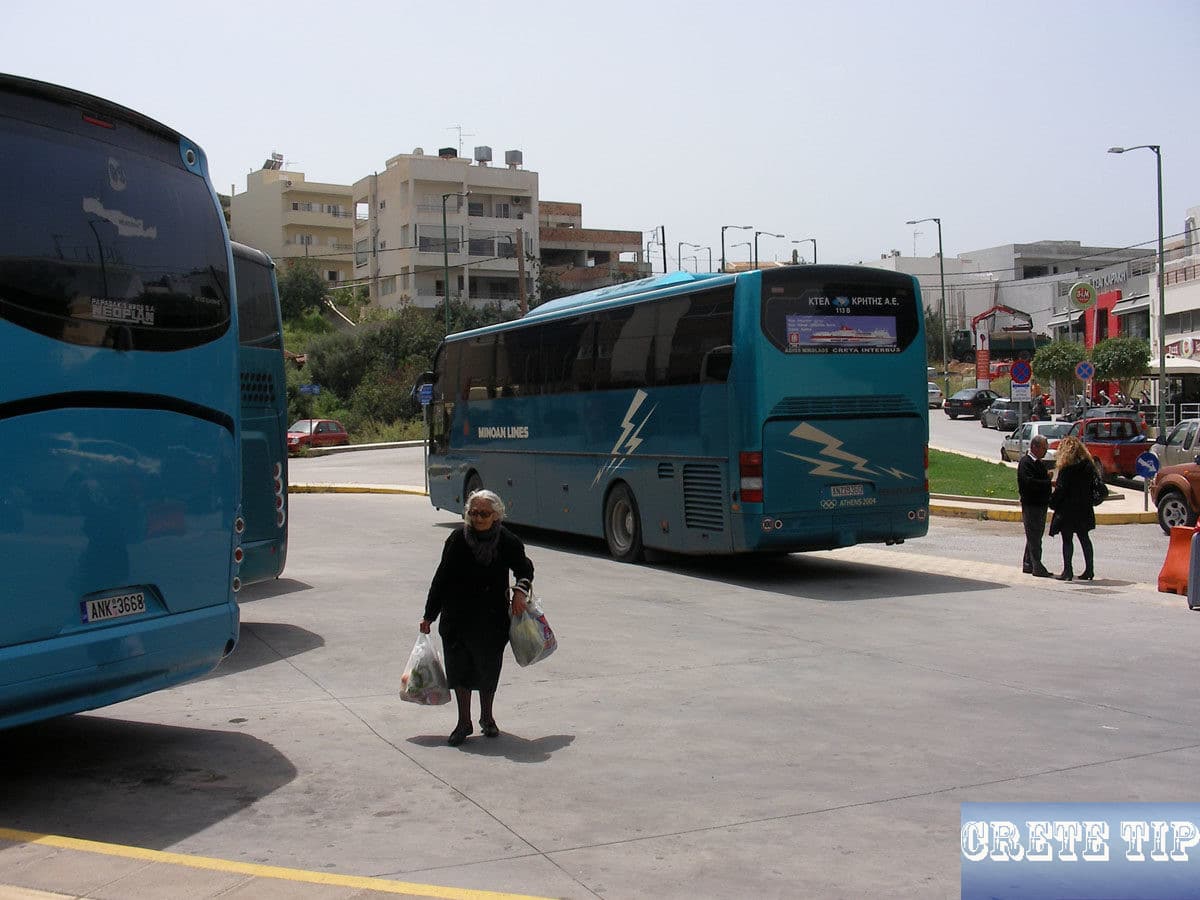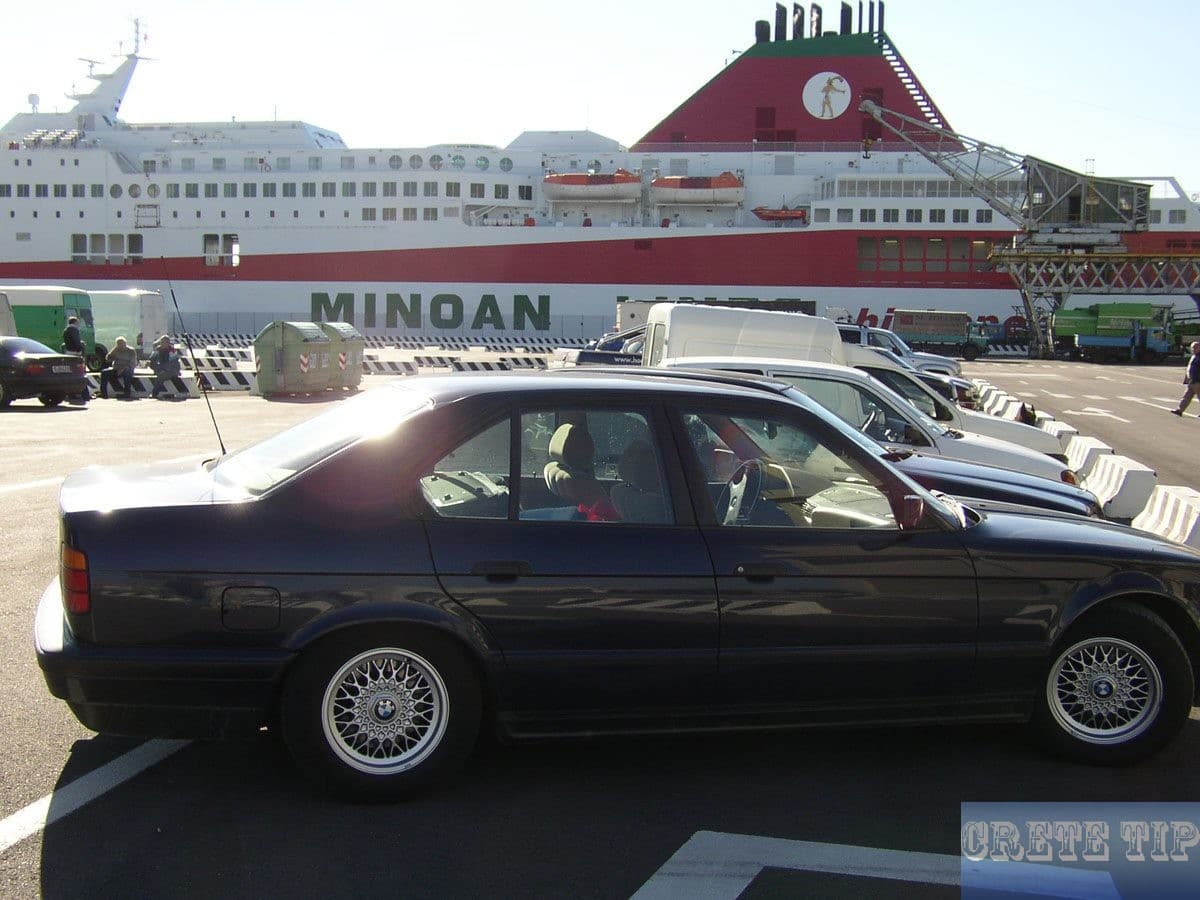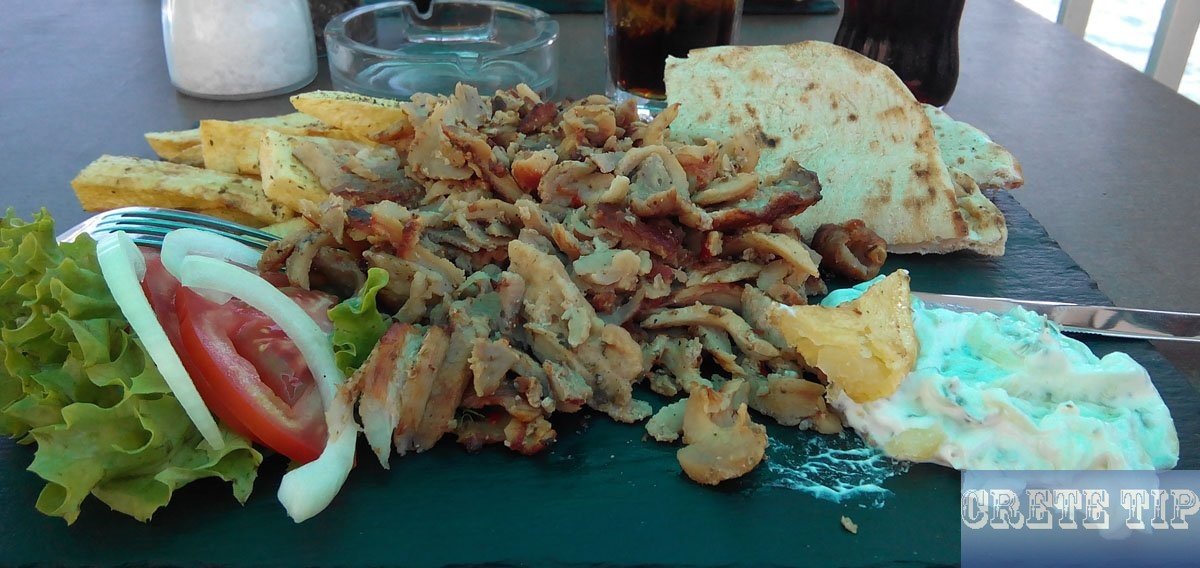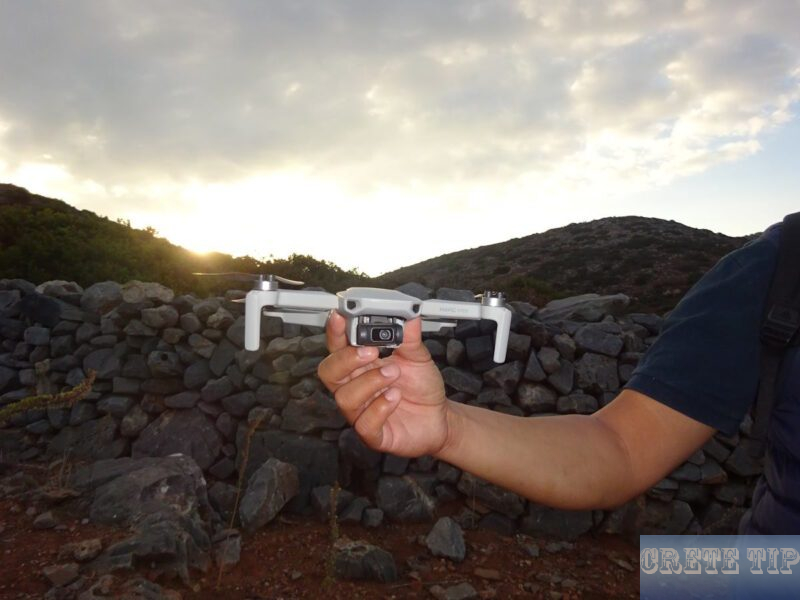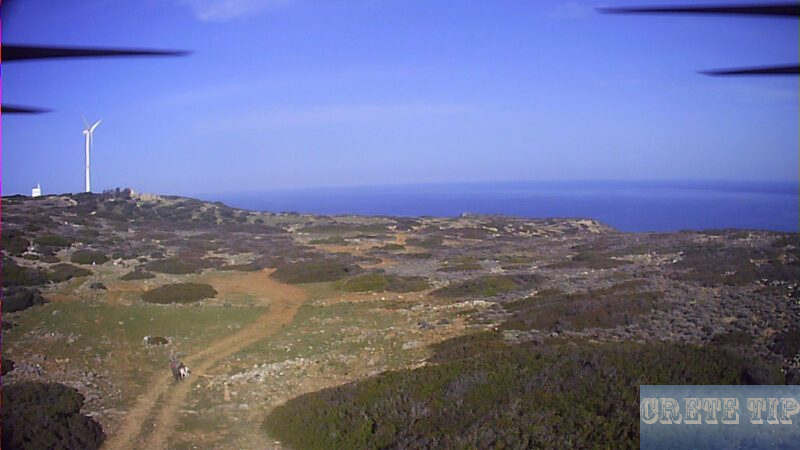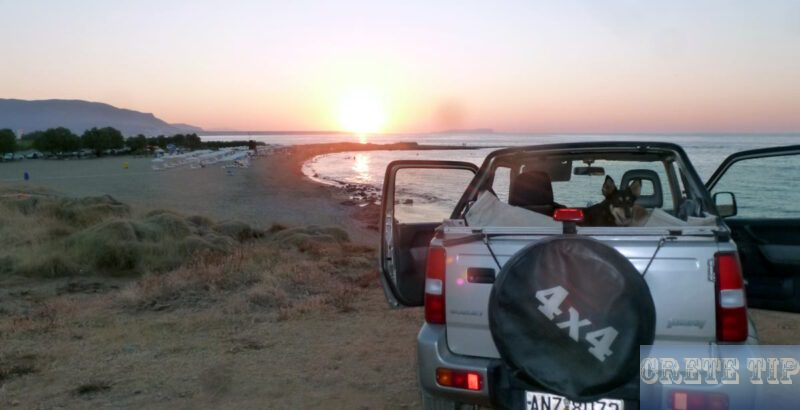General and Important Travel Information for Holidaymakers to Crete: Essential Tips for a Seamless Experience.

Travelling to Crete presents holidaymakers with a magnificent tapestry of experiences, from exploring ancient ruins steeped in mythology to enjoying the contemporary comforts of luxury resorts. Planning your trip is essential to ensure you capture all that the island has to offer.
Further information about Crete:
Further useful links:
General and Important Travel Information for Holidaymakers to Crete
Table of Contents
Crete is the largest of the Greek islands and boasts a diverse landscape. Here, visitors can discover endless stretches of coastline, rugged mountains, rolling olive groves, and bustling city streets.
When creating an itinerary for Crete, it’s advisable to include a variety of destinations within the island to fully appreciate its rich cultural heritage and natural beauty.
One day can be spent wandering through the remains of the Minoan palace at Knossos, and the next, soaking up the sun on the exquisite beaches of Elafonissi.
Each region presents its own unique attractions, from the historical intrigue of Heraklion to the Venetian charm of Rethymnon and the stunning seascapes in Chania.
Accommodation in Crete caters to a wide array of tastes and budgets. Whether one is looking for a tranquil seaside villa or a hotel in the heart of a bustling city, the island’s offerings ensure comfort and convenience for travellers.
It’s wise for holidaymakers to book their stay in advance, especially during peak season, to secure their ideal spot.
Similarly, understanding the island’s public transport system or considering car hire options can greatly enhance mobility. This allows visitors to traverse Crete’s varied terrains with ease and make the most of their Greek adventure.
Understanding Crete
Crete, the largest Greek island, offers a remarkable blend of stunning landscapes, rich history, and vibrant contemporary culture. Its unique attributes make it a captivating destination for holidaymakers.
Geography and Climate
Crete is characterised by a diverse geography, from the high peaks of the White Mountains to the expansive beaches along its coastline. Its Mediterranean climate ensures mild, wet winters and hot, dry summers, making Crete a year-round destination.
The ideal times for a visit are between mid-May to June and from September to October when the weather is warm yet comfortable.
History and Cultural Heritage
The island’s rich history is encapsulated within its ancient ruins, such as the Palace of Knossos, heart of the Minoan civilization.
Crete’s strategic location has seen the island host a succession of powers, from the Venetians to the Ottomans, each leaving a distinctive mark on the architecture and culture.
The Archaeological Museum of Heraklion provides an in-depth look into Crete’s ancient past, often considered the birthplace of Zeus according to Greek mythology.
Contemporary Cretan Culture
Modern Crete still thrives on its traditions and culture. The island’s vibrant culture manifests in its music, dance, and festivals, which frequently celebrate Cretan history and mythology.
Traditional villages hold on to age-old customs, and visitors can witness this living heritage firsthand.
Cretan food is another cornerstone of the local culture, celebrated for its quality and taste, forming an integral part of the island’s identity.
Preparing for Your Trip
When planning a holiday to Crete, travellers should ensure they are well-informed about the necessary travel documents, customs regulations, packing essentials, currency requirements, health and safety measures, and the tourist infrastructure on the island.
Proper preparation will ensure a smooth and enjoyable experience in this beautiful Greek island.
Travel Documents and Entry Requirements
Travellers to Crete must have a valid passport, and depending on their nationality, a visa may also be necessary for entry into Greece.
Citizens of the EU can travel freely with only their identity card. It’s important to confirm visa requirements well in advance of travelling.
Visa Requirements
Before traveling to Crete, it’s important to check the visa requirements for your country of residence. Greece is a member of the Schengen Agreement, which allows visa-free travel for citizens of many countries for up to 90 days within a 180-day period.
If you’re a citizen of a country that requires a visa to enter Greece, make sure to apply well in advance of your trip. Contact the Greek embassy or consulate in your country for more information on the visa application process.
Visa requirements can vary depending on the purpose of your visit. If you’re planning to visit Crete for tourism or leisure, you will generally need a Schengen tourist visa. This visa allows you to stay in Greece for up to 90 days within a 180-day period. However, if you’re planning to work or study in Crete, you may need a different type of visa, such as a work or student visa.
When applying for a visa, you will need to provide certain documents to support your application. These may include a valid passport, proof of accommodation in Crete, proof of financial means to support yourself during your stay, travel insurance, and a detailed itinerary of your trip. It’s important to check the specific requirements for your country of residence, as they may differ.
It’s also worth noting that visa requirements can change, so it’s essential to stay updated on the latest information. Check the official website of the Greek embassy or consulate in your country for the most accurate and up-to-date visa requirements.
Additionally, if you plan to visit other countries in the Schengen Area during your trip, it’s important to be aware of the Schengen visa rules. The 90-day limit applies to the entire Schengen Area, so the time you spend in other Schengen countries will count towards your total allowed stay in Greece.
Remember to plan ahead and allow enough time for the visa application process. Applying well in advance will help ensure a smooth and stress-free trip to Crete.
Customs regulations
Upon entering Crete, tourists need to be aware of Greece’s customs regulations. These rules govern what can be brought in and taken out of the country, including duty-free allowances for tobacco, alcohol, and other goods.
Travel supplies for personal use may be carried duty-free.
Standard quantities for travelers from the EU: 800 cigarettes, 400 cigarillos, 200 cigars, 1 kg (2.2 lb) of tobacco, 10 liters of spirits, 20 liters of intermediate products, 90 liters of wine (including a maximum of 60 liters of sparkling wine), 110 liters of beer.
Lower limits apply for travelers outside the EU.
The export of antiques is strictly prohibited!
Packing Essentials and Dress Etiquette
Packing for Crete means preparing for a Mediterranean climate.
Light, airy clothing is recommended, with a hat and sunglasses for protection against the sun. Dress code tends to be casual, but some religious sites require modest attire.
Always include a good pair of walking shoes for exploring.
Cretans generally dress conservatively, especially when visiting churches or monasteries. It’s recommended to cover your shoulders and knees when entering religious sites. In addition to religious sites, it’s also important to dress appropriately when visiting traditional villages or attending cultural events.
Wearing modest clothing that respects the local customs and traditions will help you blend in and show respect for the local culture.
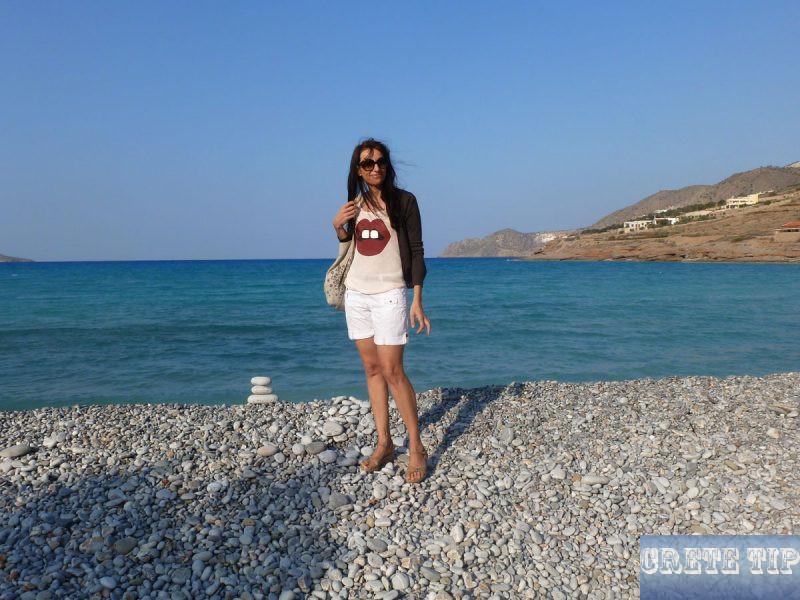
Respecting Religious Sites
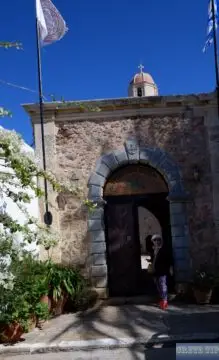
When visiting churches or monasteries, remember to dress appropriately and avoid taking photos without permission. It’s also important to maintain a respectful and quiet demeanor. Keep in mind that these sites hold great religious and historical significance to the local community, so it’s important to show reverence and avoid any disruptive behavior. If you’re unsure about any specific rules or customs, it’s always a good idea to ask a local or a guide for guidance.
By following these customs and etiquette, you’ll not only show respect for the local culture but also enhance your overall experience in Crete. The Cretan people are known for their warm hospitality, and by embracing their customs, you’ll be able to connect with the locals on a deeper level and create lasting memories of your time on this beautiful island.
Greetings
When meeting someone for the first time, it’s customary to shake hands.
Close friends and family members often greet each other with a kiss on both cheeks. However, it’s important to note that the number of kisses may vary depending on the region. For example, in some areas, it is common to give three kisses, while in others, two kisses are the norm.
Money and Expenses
The local currency in Crete is the euro.
Prices for dining out, shopping, and activities can vary, so it’s wise to budget accordingly.
Carrying a mix of cash and cards is advisable, and consider travel insurance to safeguard against unexpected expenses.
Health and Safety
Crete is generally a safe destination with readily available emergency services.
Travellers are encouraged to carry health insurance and be aware of the location of hospitals. Drinking water is safe in most areas, but bottled water is recommended for those with sensitive stomachs.
Pharmacies (‘Farmakeion’) are marked with a green cross. Outside of regular opening hours, there is always a pharmacy in the area providing an emergency service.
Stay hydrated: During the hot summer months, it’s important to stay hydrated, especially if you’re spending time outdoors. Carry a water bottle with you and drink plenty of fluids throughout the day. Dehydration can lead to heat exhaustion or heatstroke, so it’s crucial to prioritize hydration.
While Crete offers a delicious culinary experience, it’s important to be mindful of food and water safety. Stick to reputable restaurants and avoid street food vendors whose hygiene practices may be questionable. Additionally, drink bottled water or boil tap water before consuming it to avoid any potential waterborne illnesses.
Sun protection: The sun in Crete can be intense, so make sure to protect yourself from sunburn. Wear sunscreen with a high SPF, a hat, and sunglasses, and seek shade during the hottest hours of the day. Sunburn not only causes discomfort but also increases the risk of skin cancer, so taking precautions is essential.
Tourist offices and tourist police
Tourist offices provide valuable information on attractions and events, and can assist with accommodations and travel arrangements.
The tourist police are a specialised branch focused on assisting holidaymakers and ensuring their safety.
The Greek Central Office for Tourism is called EOT or ‘Ellenikos Organismos Tourismoi’ for short and has branches in all major towns (e.g. also in Aghios Nikolaos at the port).
However, these have variable and different opening hours.
The largest EOT branch on Crete is at the Archaeological Museum in Iraklion, at Odos Xanthoudidou 1.
The tourist police is a specialized department that helps holidaymakers and ensures their safety. Its officers understand and speak sufficient English.
The telephone number of the tourist police is 171, the regular police number is 100 and the Europe-wide emergency number is 112 (available 24 hours a day in Greece).
Banks, post office and telephone
Banks are usually open on weekdays, and ATMs are widely available.
Post offices operate throughout Crete, providing postal and other services.
For international calls, prepaid calling cards offer convenient rates.
International dialing codes:
Greece 00 30,
Germany 00 49,
Austria 00 43,
Switzerland 00 41,
Great Britain 00 44.
How to get there
The easiest way to reach Crete is to fly to one of the island’s two major airports. Iraklion International Airport in the island’s capital is the busiest and largest airport. It offers a wide range of international flights from major European cities, making it a convenient choice for travelers from abroad.
Chania International Airport, located in the city of Chania in the west of the island, is another popular option for international travelers. It is also served by flights from major European cities and offers convenient access to the western part of Crete.
If you are already in Greece and prefer to travel by sea, a ferry to Crete is a good option.
The port of Piraeus in Athens offers regular ferry connections to Heraklion and Chania, so you can enjoy a scenic journey across the Aegean Sea. The ferry ride can be an unforgettable experience, offering breathtaking views of the Greek islands along the way.
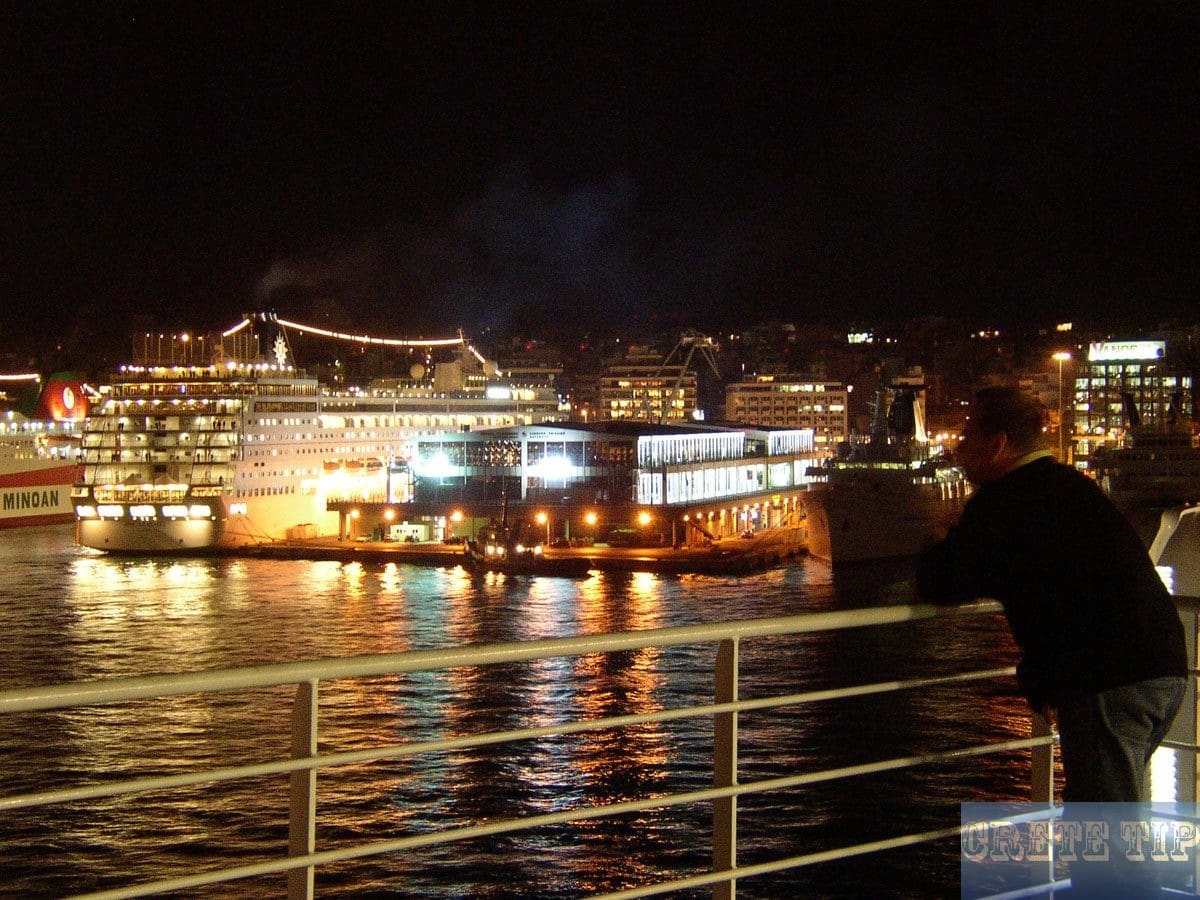
Accommodation Tips
Crete offers a variety of accommodation options, from luxury resorts to budget rooms and family-run hotels.
Booking in advance is highly recommended, especially during peak tourist season, to secure the best rates and locations.
Diplomatic Services
British Vice Consulate Crete
Candia Tower, 17 Thalita Street, Ag. Dimitrios Square, Heraklion, 71 202 Crete
Telephone: +30 2810 224012/+44 20 7008 5000
US Embassy and Consulate in Greece
(Athens and Thessaloniki)
Getting Around Crete

Crete’s vast landscape and varied terrain require careful consideration when planning transport.
Whether one opts for a car rental to explore at their own pace or utilises the island’s public transport network, understanding the options is crucial for a smooth travel experience.
Transportation Options
Car Rental: A popular choice for visitors, car rental gives the freedom to discover Crete’s multitude of sights at one’s convenience.
Heraklion Airport serves as a primary pick-up location for many car rental agencies, making it a convenient option immediately upon arrival.
It’s recommended to book in advance, especially during peak tourist season, to secure availability and better rates.
Public Transport: Crete’s public transport mainly consists of buses that connect major towns and tourist areas.
While schedules might not always align with individual travel plans, they offer a budget-friendly alternative to car rental.
Bus services are less frequent in remote areas, hence early planning is essential. For journeys originating or ending in major hubs like Heraklion, the central bus station serves as the main gateway for intercity travel.
Taxis: Readily available in cities and at airports, taxis in Crete offer a convenient, though more expensive, mode of transport.
They can be hailed on the street or booked in advance. It’s advised to agree on the fare before starting the journey to avoid any confusion.
Navigation and Driving
Navigation: Travellers in Crete typically rely on GPS and maps to navigate around the island, with numerous smartphone apps available to assist in finding even the most secluded spots.
Paper maps are still useful, particularly in areas with limited mobile signal. When navigating rural or mountainous areas, a GPS with up-to-date maps is invaluable.
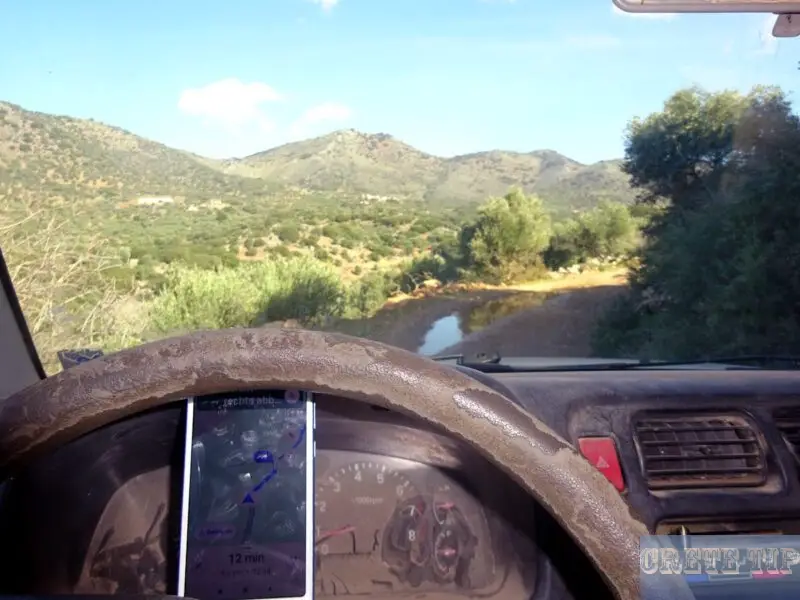
Driving: Driving in Crete can be an adventure, with winding roads and varying conditions.
Adequate insurance coverage is necessary when renting a car, and drivers should be prepared for anything from narrow village streets to unpaved mountainous paths.
Observing local driving customs and speed limits is important for a safe journey.
Always be on the lookout for sudden turns or blind corners, especially in the mountainous areas.
Food and Dining
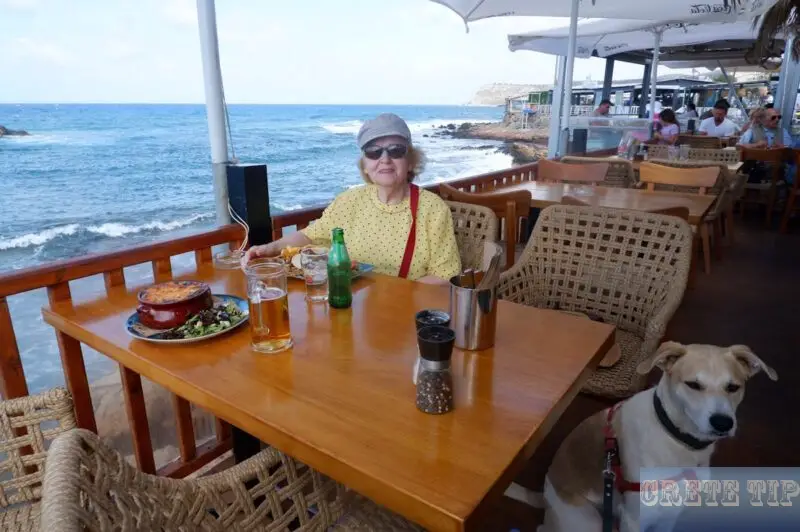
When holidaymakers venture to Crete, they not only discover stunning landscapes but also a rich tapestry of culinary traditions.
Cretan Cuisine
Cretan food is famed for its emphasis on fresh, quality ingredients like olive oil, vegetables, pulses, and grains.
Horta (wild greens), paired with the essential Cretan spirit raki, form part of the daily diet.
Olive oil is not merely an ingredient but the cornerstone of Cretan cuisine, used liberally in most dishes.
Meals often include a bounty of local cheese, honey, herbs, and not to forget, the island’s renowned Greek yoghurt.
Local Dining Experiences
Dining in Crete is not just about sustenance, it’s a ritual.
Restaurants in Crete range from traditional tavernas serving local dishes to modern eateries offering contemporary interpretations of Cretan food.
Freshly caught fish is a staple in coastal areas.
For an authentic experience, visitors should explore the kafenions, the small coffee shops where locals gather, and enjoy Cretan music and nightlife, often accompanied by flavourful meze platters.
Eating Out and Restaurant Etiquette
When eating out, restaurant etiquette in Crete mirrors the relaxed and friendly culture.
Tipping is appreciated, usually around 5-10% of the bill.
Cretans take pride in their hospitality, so visitors can expect warm welcomes and generous portions.
In many restaurants, it’s common to receive a complimentary dessert or fruit at the end of a meal.
The Cretans are known for taking their time with meals, especially in the evening, so diners are advised not to rush — savouring each dish is an integral part of the dining experience.
Attractions and Activities
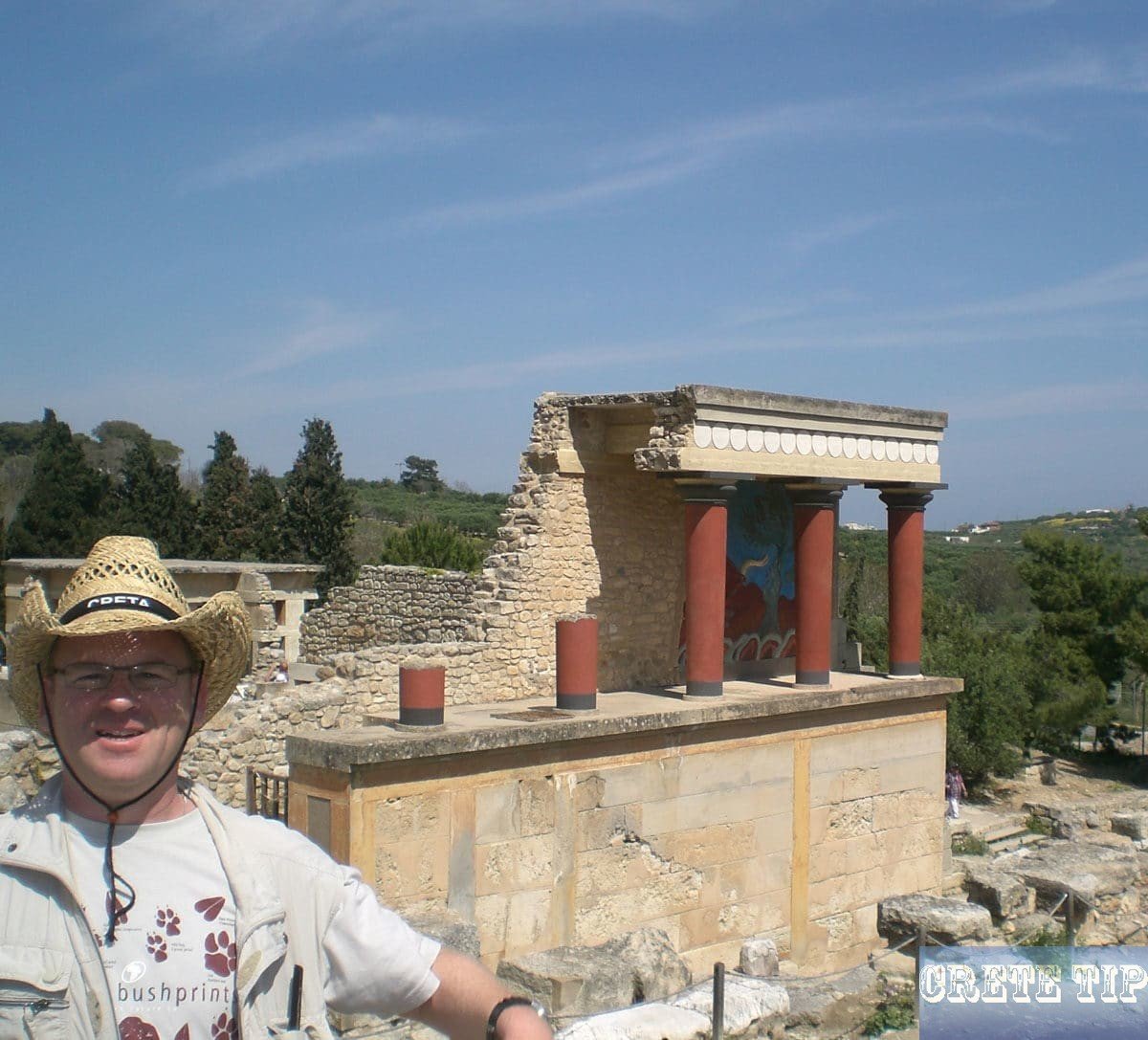
Crete offers a rich tapestry of attractions and activities that cater to history buffs, nature lovers, and thrill-seekers alike.
From the ancient ruins echoing the sophistication of Minoan civilization to the unspoiled natural landscapes and modern-day leisure pursuits, Crete is a destination that promises memorable experiences for all visitors.
Must-See Historical Sites
Knossos: The Palace of Knossos, a monumental symbol of the Minoan civilisation, is Crete’s most iconic archaeological site.
Here, visitors can witness the grandeur of ancient palaces and frescoes that narrate a history dating back over 3,500 years.
Festos (Phaistos): In the south of Crete, the historical site of Festos (Phaistos) presents a less crowded but equally fascinating glimpse into the Minoan world with its magnificent palace complex.
Heraklion Archaeological Museum: Presenting a comprehensive collection of Minoan artefacts, this museum in the city of Heraklion is a must-visit for anyone interested in Cretan history and culture.
Natural Wonders
Samaria Gorge: Trekking through the Samaria Gorge, Europe’s longest gorge, offers a challenging yet rewarding adventure, unveiling Crete’s mountainous heart and diverse landscapes.
Elafonisi Beach: The crystalline waters and pink-hued sand make Elafonisi Beach a natural marvel, perfect for swimming and relishing the unparalleled beauty of Crete’s coastline.
Vai: Famous for its unique palm forest, Vai combines exotic scenery with a golden beach, inviting visitors to enjoy nature’s splendour.
Leisure and Adventure Opportunities
Water Sports: With an array of beaches like Preveli, Balos, and Elafonisi, Crete is the perfect spot for water sports enthusiasts.
Here, they can indulge in windsurfing, kite surfing, and scuba diving.
Hiking and Outdoor Activities: The diversity of Cretan landscapes presents ample opportunities for hiking. Destinations such as the imposing White Mountains and scenic coastal paths offer routes for every level of experience.
Cultural Experiences: Cities like Chania, Rethymno, and HeraklionHeraklion offer a blend of cultural activities.
These range from Venetian fortresses to Ottoman mosques and contemporary art exhibitions, reflecting the island’s rich historical layers.
Shopping and Souvenirs
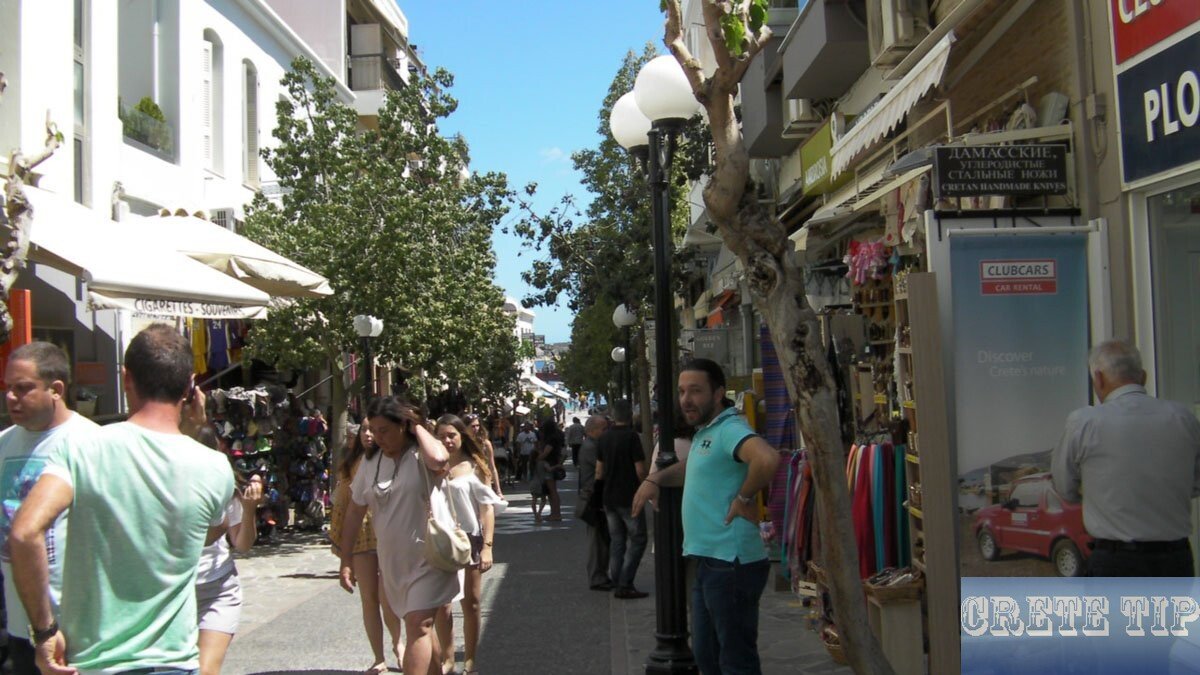
Crete’s vibrant markets and quaint boutiques are treasure troves for those seeking to take a piece of the island’s rich culture home.
Local Crafts and Produce
Cretan handicrafts are a testament to the island’s enduring heritage.
Amongst them, the renowned Cretan knives are more than just cutting tools; they are symbols of bravery and respect in the local culture, making them a significant souvenir for visitors.
Local artisans also produce exquisite jewellery and pottery, with designs reflecting the island’s ancient Minoan history.
For those inclined towards gastronomy, Crete offers an array of local products such as olive oil, renowned for its superior quality, and carob-based items, revered for their health benefits.
Shopping Areas and Retail Therapy
In Crete, each city offers a unique shopping experience.
Heraklion, for instance, boasts modern boutiques alongside traditional markets where one can find authentic souvenirs.
Chania’s narrow streets are lined with workshops and stores selling local crafts and textiles.
In the picturesque city of Rethymno, visitors can explore vibrant shopping lanes that offer a blend of contemporary and traditional goods.
Finally, Agios Nikolaos captivates with its upscale shops and waterfront stores, ideal for a leisurely shopping excursion.
Whether seeking retail therapy or authentic markets, Crete satisfies the desires of every shopper.
Seasonal Considerations
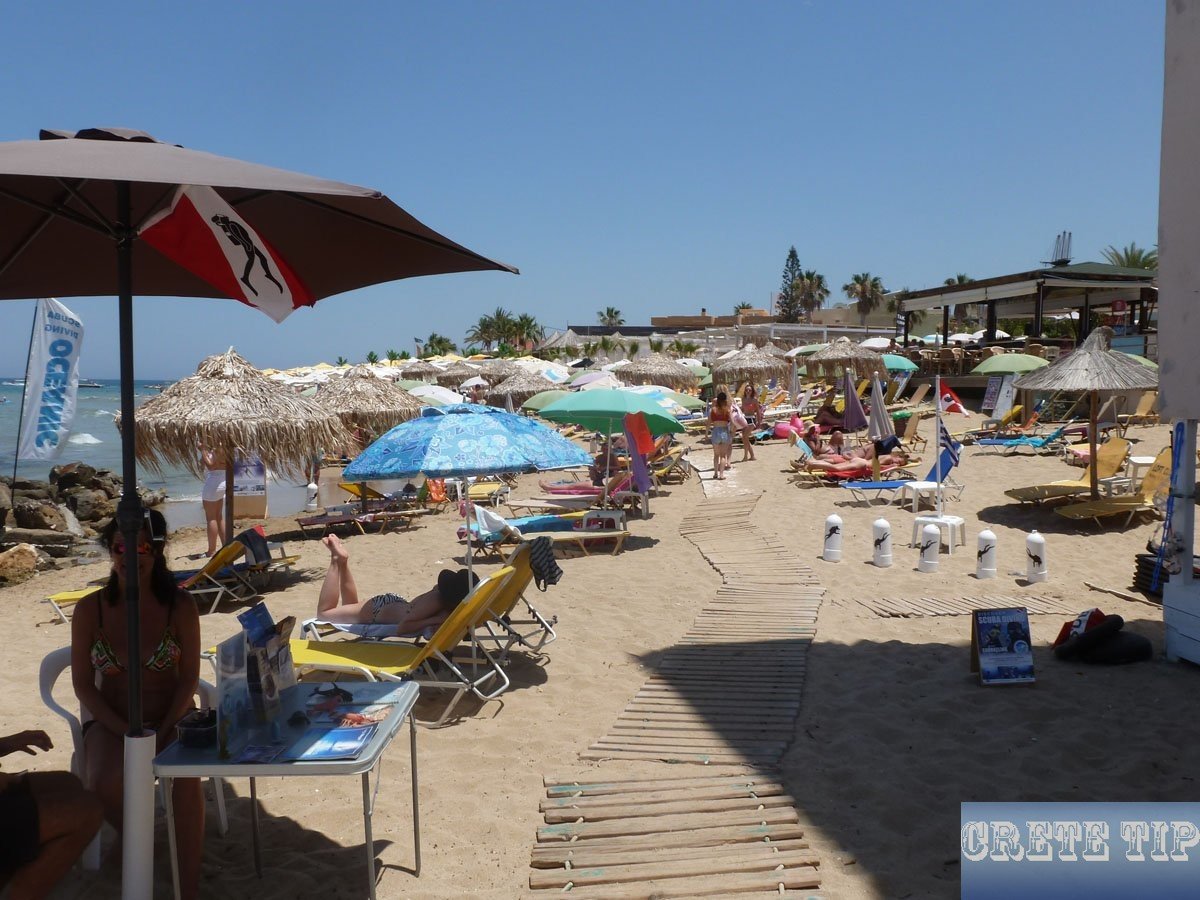
When considering a trip to Crete, it’s essential to weigh the aspects of timing and tourist volume. These factors significantly impact your holiday experience.
Best Time to Visit
The optimal period to visit Crete for beach activities and warm weather extends from June to mid-September.
July and August represent the zenith of the summer season, with temperatures frequently surging above 30 degrees Celsius. The warm sea temperatures during this time are ideal for swimming and snorkelling.
For those seeking a milder climate, May and September offer a balance of pleasant weather and smaller crowds.
Coping with Crowd Management
During the high season, especially in July and August, Crete’s popular destinations teem with holidaymakers.
Visitors should anticipate crowded beaches and tourist sites. Planning ahead for accommodation and excursions is strongly advised to circumvent the inconveniences of peak season.
For a more serene experience, one might consider visiting during the quieter times such as late spring or early autumn, when tourism is less intense yet the island retains its vibrant charm.
Tips for Unique Experiences
For travellers seeking more than sun-soaked beaches and tourist trails, Crete offers an array of unique opportunities to immerse oneself in its local culture and uncover lesser-known treasures.
Discovering Hidden Gems
One ventures to Crete not only to see the well-trodden paths but to discover its hidden beaches and secluded spots.
A true gem is the drive to Elafonisi beach, a journey marked by the dramatic landscapes of the Topolia Gorge and the reward of a less frequented paradise at its end.
Similarly, the mountainous terrain hides charming mountain villages—such as Anogeia and Archanes—ripe with unique history and a slower pace of life.
Cultural Immersion and Local Traditions
The heart of Crete beats in its traditional villages and local festivities.
To truly understand Crete, one must experience the vibrancy of its festivals, where music, dance, and the spirit of togetherness illuminate the essence of authentic Cretan life.
The ritual of sharing raki, the locally distilled spirit, encapsulates the warm hospitality that is integral to local culture.
Adventurers can engage with local traditions by learning folk dances or participating in olive harvesting, activities deeply rooted in the Cretan way of life.
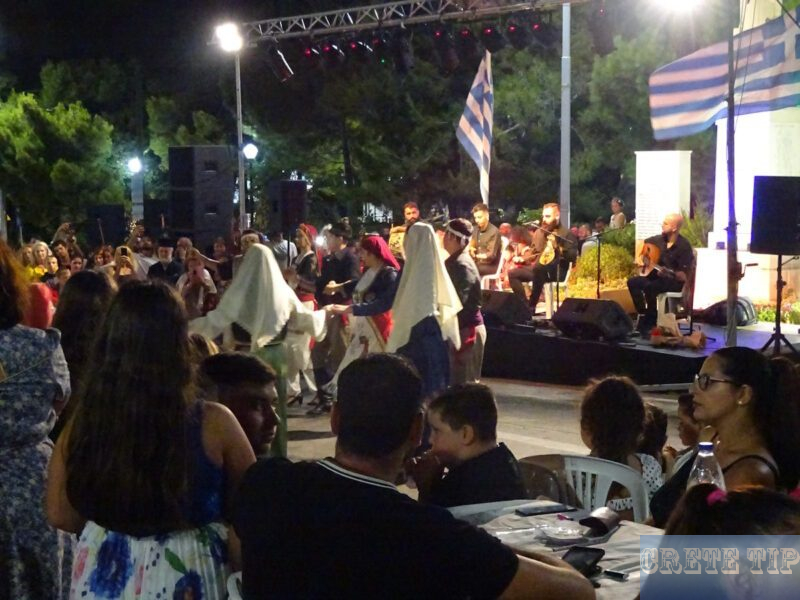
Final Considerations for Holidaymakers
As holidaymakers prepare to bid farewell to Crete, it’s crucial to consider the lasting impact of their visit on the island and its community.
Respecting Local Norms and Environment
Holidaymakers are encouraged to immerse themselves in Crete’s rich traditions and vibrant culture.
It is important to respect local customs and practices, be it in dressing appropriately when visiting religious sites or participating in local festivals.
Visitors should also show environmental responsibility; this includes not littering, especially on the exquisite beaches, and following designated trails when exploring natural attractions.
- Do:
- Engage with local customs
- Dress respectfully in religious sites
- Don’t:
- Litter on beaches
- Damage natural sites
Departure and Reflection
On departure, holidaymakers should take a moment for reflection.
Recollecting memories of the journey and the beauty of Crete can be done by creating a travel journal or a photo album.
This not only serves as a personal keepsake but also allows them to share their experiences and promote environmental and cultural awareness among peers back home.
- Reflect on:
- Personal highlights
- Cultural insights
- Consider:
- Starting a travel journal
- Acts of environmental kindness during the stay
Conclusion
Crete beckons holidaymakers with its rich history and natural beauty, offering a tapestry of experiences that cater to a variety of interests.
It stands as a culinary delight for the food enthusiast and a reservoir of vibrant culture for those absorbed in the narrative of human civilisation.
Holidaymakers should consider:
- The island’s diverse landscape, ranging from mountainous terrains to serene beaches, ensures a myriad of activities.
- Whether it’s hiking through the rugged gorges or lounging beside the azure waters, Crete offers an encounter with nature that is both rejuvenating and picturesque.
- A journey through Crete is incomplete without indulging in the local cuisine. With a focus on fresh, locally-sourced ingredients, the food alone can be a compelling reason to visit.
- The rich tapestry of history that weaves through every corner, from Minoan palaces to Venetian fortresses, presents travellers with a chance to step back in time.
Travellers must also be mindful that:
- A well-structured travel guide is indispensable for navigating the island’s attractions efficiently.
- Preparing for Crete’s Mediterranean climate will ensure comfort and enjoyment throughout the trip.
Additional Resources
When planning a trip to Crete, holidaymakers have a multitude of resources at their disposal. These tools can assist with everything from emergency contacts to in-depth guides on Cretan culture and history.
Useful Websites and Apps
For up-to-date travel information and practical tips, several websites and apps are particularly helpful.
Emergency services in Crete can be reached at 112, which is the general emergency number.
For more specific travel information, have a look on accommodation, car rentals, flights, Ferry connections and tours and trips.
Additional tools for navigating local transport, finding activities, and checking weather updates can be found through various travel apps designed for convenience and ease of use.
Further Reading and Research
For those looking to deepen their understanding of Crete’s rich history and vibrant culture, there are abundant books and documentaries available.
Travel to Crete: Resources to Plan a Trip to Crete – The Tiny Book is a treasure trove of further reading suggestions.
Moreover, insightful documentaries about Crete’s ancient civilisations and their influence on the modern island can also provide context to the trip.
Travel blogs such as CreteTip.com often report on personal experiences and offer differentiated insights into local customs and lifestyle.
Frequently Asked Questions
This section addresses specific queries travellers may have when preparing for a trip to Crete to ensure they have the necessary documentation and are aware of the travel requirements.
Are there any specific safety concerns for tourists travelling to Crete?
Tourists travelling to Crete should be aware of general safety concerns such as petty theft.
It is always advisable to check for any specific advisories before travelling.
Which documents are essential for EU citizens to prepare before travelling to Crete?
EU citizens should ensure they have a valid identity card or passport when travelling to Crete.
Which documents are essential for UK citizens to prepare before travelling to Greece?
UK citizens need to have a valid passport for entry into Greece, and it is recommended to obtain a European Health Insurance Card (EHIC) or its replacement, the Global Health Insurance Card (GHIC), before travelling.
What are the passport validity requirements for EU travellers entering Crete?
EU travellers must have a passport or ID card that remains valid for the duration of their stay in Crete.
What are the passport validity requirements for UK travellers entering Greece?
UK passports should be valid for at least six months beyond the intended date of departure from Greece.
Does one require a visa for short-term stays in Crete as a British national?
British nationals do not need a visa for short-term stays up to 90 days in Crete within a 180-day period for tourism.
Are there any government advisories for UK holidaymakers regarding travel to Crete?
UK holidaymakers are encouraged to check the Foreign, Commonwealth & Development Office (FCDO) advice for the latest travel information and advisories regarding Crete.


